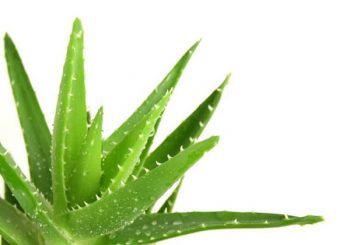Guest Writer for Wake Up World
Nicknamed the “plant of immortality” in ancient times, aloe vera is a true wonder of nature. The spiky succulent plant has a vast variety of uses, the most famous being aloe vera for skin health. From acne and burns to stretch marks and more, this herbal powerhouse can moisturize, nourish, and soothe.
You can apply aloe vera gel — the clear, bitter, jelly-like substance from inside the leaf — directly to the skin as a healing salve, or combine it with other ingredients in unique skin-soothing recipes.
Scroll down for do-it-yourself (DIY) recipes you can make at home with aloe vera for acne, stretch marks, rashes, and skin conditions of all kinds.
Benefits of Aloe Vera for Your Skin
Aloe vera gel contains at least 75 identifiable nutrients and plant compounds with various applications for health and healing.[1] This powerful constellation of healing agents makes aloe vera incredibly versatile for health, wellness, beauty, and cosmetic purposes.
Moisturizes Naturally
Aloe vera contains plant compounds known for their natural moisturizing powers. Unique to aloe vera, the polysaccharide (plant sugar) acemannan has a hydrating effect on dry skin, as well as numerous additional therapeutic properties.[2]
Aloe vera’s excellent moisturizing properties make it the perfect solution for preventing razor burn!
Aloe vera gel also has a high water content and is not greasy, making it an excellent moisturizer when applied directly to the skin. You can also apply aloe vera gel after shaving to retain moisture and prevent razor burn.
Supports Anti-Aging and Reduces Wrinkles
Did you know that aloe vera can stimulate collagen production?
Aloe vera can help reduce the appearance of wrinkles and fine lines, according to science. In one study, women over 45 years of age took aloe supplements orally for 90 days, after which the researchers measured the appearance of their eye “crow’s nests” using skin microrelief maps. Dietary aloe not only led to smoother skin but also stimulated collagen production.[3]
Aloe vera also contains antioxidants that may help with aging, since these compounds counteract the age-related damage of free radicals in the body.[4] Some people find that aloe juice complements topical gel as part of an overall anti-aging diet and regimen.
See “Aloe Vera for Healthy Skin” for recipes.
Soothes Burns
Great news! Science shows that aloe vera helps with healing first- and second-degree burns.
Got a burn? Slather on some aloe vera gel. A scientific review of multiple studies revealed that aloe vera applied to the skin speeds healing for first- and second-degree burns.[5]
Although we need more research on why aloe vera helps with burns, we know that the bioactive plant sugar it contains, acemannan, combined with antioxidants and other plant compounds, may help the body to heal.[2]
See “How to Use Aloe Vera for Burns” for recipes, including wraps and poultices.
Relieves Sunburns
Whoa! Did you know that aloe vera stimulates the growth of new cells?
Cool to the touch and naturally soothing, aloe vera gel is an intuitive remedy for sunburn relief. The plant’s emollient properties and high water content may help to reduce the sting as well as the dry, flaky skin that comes with sunburns.
Aloe vera also contains the plant hormone gibberellin, which stimulates the growth of new cells and may aid in healing the skin.[6]
May Help With Acne
Aloe vera’s antibacterial, antiseptic, and anti-inflammatory properties make it an effective acne remedy when applied topically.
In one study, a combination of tretinoin cream (a common acne medication) and aloe vera gel was more effective than tretinoin cream on its own to help mild to moderate acne.[7] It appears that aloe boosted the effectiveness of the medication.
Aloe vera may boost the effectiveness of acne medications.
Although we need more research into how aloe vera fights acne, we do know that acemannan encourages wounds to heal at a healthy pace and also promotes smooth skin.[2, 8] Aloe vera’s polyphenols (antioxidant compounds) may ward off harmful organisms and toxins within the pores that cause acne and worsen the redness.
See “Aloe Vera Masks and Scrubs for Acne” for recipes.
Promotes Skin Healing
There is much science to support aloe vera’s ability to heal wounds — perhaps due to acemannan’s ability to assist the skin’s natural healing properties.[8] Hence, aloe vera may have good use as a remedy for minor scrapes, cuts, and rashes. Aloe vera’s polyphenols also have antibacterial properties that may ward off infection.[9]
May Help With Stretch Marks
Aloe vera may help to diminish the appearance of stretch marks, tiny tears just under the skin’s surface that appear as reddish or purplish marks. These occur when the skin stretches beyond its normal limits, common after pregnancy or anytime someone experiences quick weight gain or loss.
Scientific evidence does not directly indicate that aloe vera helps get rid of stretch marks, but acemannan’s ability to promote skin healing may help fade these marks over time, especially when used in combination with other substances, like vitamin E.
See “Best Aloe Vera Recipes for Stretch Marks” for recipes
Relieves Flaky, Itchy Skin Symptoms
Check this out! Pure aloe vera gel may provide some relief to the itchiness of psoriasis.
If you suffer from flaky, itchy skin, pure aloe vera gel may provide some relief. The cool gel soothes the skin, reduces redness and swelling, and promotes hydration. One study demonstrated the effectiveness of topical aloe vera for psoriasis in an animal model.[10] However, we need more studies on psoriasis in humans.
Promotes a Healthy Scalp
With its emollient properties, aloe vera may relieve an itchy scalp and help with dandruff. Its combination of proteolytic enzymes, antibacterial properties, and moisturizing emollients can help soothe the scalp and repel the microbes that cause dandruff’s dead skin flakes.[11]
Aloe Vera Recipes for Healthy Skin
In all of the recipes below, make sure to use either 100 percent pure organic aloe vera gel (if store-bought), or aloe gel taken directly from an aloe plant.
Light Summer Moisturizer
Ingredients
- 1 teaspoon pure aloe vera gel
Directions
- Apply aloe vera gel directly to face, including the neck.
- Use in the morning and evening. Avoid your eye area.
Anti-Aging Eye Cream Recipe
Ingredients
- Vitamin E capsule
- 1 tablespoon pure aloe vera gel
Directions
- Puncture a vitamin E capsule with a pin and squeeze the oil into a small bowl.
- Add 1 tablespoon of aloe vera to the oil. Use a spoon to mix well.
- With the pad of your finger, lightly dab a bit of the mixture on the skin surrounding your eyes.
- Apply nightly before bed.
Aloe Vera, Honey, and Sea Salt Scrub
Ingredients
- 2 tablespoons pure aloe vera gel
- 1 tablespoon organic raw honey
- 1/4 cup organic sea salt
Directions
- Combine aloe vera gel with sea salt.
- Mix aloe and salt with a spoon to create a paste.
- Add raw honey and blend well.
- Use as a face or body scrub, massaging into the skin and rinsing off with warm water.
Aloe Vera Recipes for Acne
The following aloe vera recipes offer ways to take advantage of the plant’s ability to deter harmful organisms, including those that contribute to acne.
Aloe Vera, Honey, and Rosewater Mask
Use organic, locally grown raw honey, which soothes the skin and naturally wards off bacteria, among numerous other health benefits.
Rosewater also lends a lovely fragrance to this soothing face mask. Alternatively, you can use lemon juice in place of rosewater, which brightens and clarifies the skin. If you have sensitive skin, you might want to avoid using lemon juice.
Ingredients
- 1 tablespoon pure aloe vera gel
- 1 tablespoon organic raw honey
- 1-2 teaspoons rosewater (alternate, 1-2 teaspoons organic lemon juice)
Directions
- In a small bowl, combine aloe vera gel, raw honey, and rosewater (or lemon juice) to make a smooth paste.
- Apply as a mask and keep on your face for 20 minutes.
- Rinse with warm water.
- Use three times a week to help with acne.
Aloe Vera and Vitamin E Oil
Vitamin E oil has antioxidant and emollient properties, making it ideal for moisturizing and skin blemishes.
Ingredients
- 1/4 cup pure aloe vera gel
- 10 vitamin E soft-gel capsules
Directions
- Break open vitamin E soft-gel capsules, collecting the oil in a small bowl.
- Add aloe vera gel and mix well.
- Massage into affected skin, and let sit at least 1 hour.
- Rinse off with warm water.
- Repeat twice daily.
Aloe Vera Recipes for Stretch Marks
Although studies have not yet tested aloe’s effects on stretch marks, its ability to smooth fine lines and moisturize skin make it promising. You can try the following aloe vera recipes.
Aloe Vera and Ground Coffee
Coffee grounds exfoliate the skin and may increase blood flow for effective healing. Be warned that working with ground coffee is messy — so use it in the shower and rinse well afterward.
Ingredients
- 2 tablespoons pure aloe vera gel
- 2 tablespoons organic ground coffee
Directions
- Mix ground coffee with aloe vera gel until well-combined.
- Apply to stretch marks, massaging into the skin in a circular motion.
- Let sit on the skin 20 minutes.
- Rinse in the shower.
- Towel dry and moisturize.
- Repeat every other day.
Aloe Vera and Coconut Oil
Coconut oil offers deep hydration in this daily skin rub.
Ingredients
- 1/3 cup pure aloe vera gel
- 1/2 cup organic virgin coconut oil
Directions
- Whisk together coconut oil and aloe vera gel to create a fluffy mixture.
- Massage into stretch marks and leave on overnight.
- Keep the mixture in an air-tight container and use every night until stretch marks fade.
How to Use Aloe Vera for Burns
As mentioned earlier, aloe vera gel is an excellent home remedy for both first- and second-degree burns. A first-degree burn results in pain and a reddening of the outer layer of the skin. A second-degree burn affects both the lower layer of the skin, resulting in blistering as well as pain and reddening.
Aloe Vera Gel for Minor Burns
On burned skin, apply a thick layer of pure aloe vera gel. Reapply after the gel dries out.
If desired, place a bandage over the aloe vera to hold it in place and retain moisture.
Aloe Vera and Carrot Poultice
To prevent scarring from burns, apply an aloe vera and carrot poultice. Both carrots and aloe contain vitamins A, C, and E, which may assist healing as well as reduce redness and swelling.[12, 13, 14]
Ingredients
- 2 organic carrots
- 1/2 cup pure aloe vera gel
Directions
- Finely grate carrots into a bowl.
- Mix with aloe vera gel and apply to the affected area.
- Use a bandage around the mixture to hold it in place.
- Reapply after poultice dries out.
- Rinse in the shower.
- Towel dry and moisturize.
- Repeat every other day.
Aloe Vera and Oatmeal Bath Soak
After your burn begins to feel better, try a soothing bath with aloe vera juice, liquid chlorophyll, and organic rolled oats. Chlorophyll can help ease skin redness, according to at least one animal study.[15] Giving the bath a silky feel, the oats contain silica, which studies find improves skin strength and elasticity.[16]
Ingredients
- 1 cup of organic pure aloe vera juice
- 1/4 cup liquid chlorophyll
- 1/2 cup rolled oats
- Cheesecloth bag or stocking
Directions
- Plug your bathtub and fill with hot water.
- As your bathwater runs, add aloe vera juice, liquid chlorophyll, and a cheesecloth bag or stocking containing rolled oats.
- Soak 20-30 minutes.
- Towel dry and moisturize.
Which Aloe Vera Product Is Best?
If you purchase aloe vera gel from a store, make sure it is pure organic aloe vera gel with no additives. If you prefer, you can use aloe vera capsules to take internally or to use in recipes. I recommend Aloe Fuzion™. Made with 100 percent pure, organic inner leaf aloe vera powder, it has the highest concentration of bioavailable acemannan on the market.
Alternatively, you can extract aloe vera gel directly from the plant using the following instructions:
- Choose one of the outermost leaves of the aloe plant, making sure you pick one that is at least 8 inches long. This ensures that the leaf is mature and has plenty of gel inside.
- Cut off the leaf using a sharp knife at the base of the plant. Rinse off and discard any yellow ooze, which is aloe latex.
- Trim the top one-third of the leaf. This thin part of the leaf does not contain much gel and can be discarded.
- With the leaf lying flat on a cutting board, cut off the hard, spiny edges on either side of the leaf.
- Slice the green skin of the aloe leaf open down the length of the leaf. You can also use a vegetable peeler to remove it. Underneath, you will see a layer of thick, clear gel at the center. This is the aloe vera gel.
- Cut the bottom skin off as well and you will have a slab of clear aloe vera gel.
- Store the gel in a clean, airtight container. Refrigerate and use within one week.
Points to Remember
A highly versatile plant with an array of wellness benefits, aloe vera can support healthy skin in numerous ways. Aloe vera gel — sourced from inside the aloe’s leaves — contains at least 75 beneficial nutrients and plant compounds, including the plant sugar acemannan, which hydrates the skin and aids with wound healing.
Among its many uses, pure aloe vera gel is helpful for the skin. It may help acne, burns, scrapes, and rashes due to its antioxidant properties, rich nutrients, and natural moisturizers. Aloe is a common folk remedy for diminishing the appearance of stretch marks and scars.
To reap the full benefits of aloe vera for your skin, use 100 percent pure organic aloe vera gel, either store-bought or extracted from the plant itself. If preferred, you can take aloe vera orally for its many health benefits. I recommend Aloe Fuzion™, an organic, high-potency aloe vera supplement.
Have you tried aloe vera for a skin remedy? Share your story below!
Article sources:
- 1 Surjushe A, et al. Aloe vera: a short review. Indian J Dermatol. 2008;53(4):163-166.
- 2 Sierra-García GD, et al. Acemannan, an extracted polysaccharide from Aloe vera: A literature review. Nat Prod Commun. 2014 Aug;9(8):1217-1221.
- 3 Cho S, et al. Dietary aloe vera supplementation improves facial wrinkles and elasticity and it increases the type I procollagen gene expression in human skin in vivo. Ann Dermatol. 2009;21(1):6-11.
- 4 Silva S, et al. An overview about oxidation in clinical practice of skin aging. An Bras Dermatol. 2017;92(3):367-374.
- 5 Maenthaisong R, et al. The efficacy of Aloe vera used for burn wound healing: a systematic review. Burns. 2007;33(6):713-718.
- 6 Sandhya G. Effects of Aloe vera on skin and on wound healing – a review. Int J Sci Res. 2017;6(4):1629-1631.
- 7 Hajheydari Z, et al. Effect of Aloe vera topical gel combined with tretinoin in treatment of mild and moderate acne vulgaris: a randomized, double-blind, prospective trial. J Dermatolog Treat. 2014;25(2):123-129.
- 8 Xing W, et al. Acemannan accelerates cell proliferation and skin wound healing through AKT/mTOR signaling pathway. J Dermatol Sci. 2015;79(2):101-109.
- 9 Nejatzadeh-Barandozi F. Antibacterial activities and antioxidant capacity of Aloe vera. Org Med Chem Lett. 2013;3:5.
- 10 Dhanabal SP, et al. Evaluation of the antipsoriatic activity of Aloe vera leaf extract using a mouse tail model of psoriasis. Phytother Res. 2012;26(4):617-619.
- 11 Ogunsola OA, et al. Moringa plant parts consumption had effects on reproductive functions in male and female rat models. J Med Dent Sci. 2017;16(10):82-86.
- 12 Singh U, et al. Vitamin E, oxidative stress, and inflammation. Annu Rev Nutr. 2005;25:151-174.
- 13 Hunt TK. Vitamin A and wound healing. J Am Acad Dermatol. 1986;15(4 Pt 2):817-821.
- 14 Moores J. Vitamin C: A wound healing perspective. Br J Community Nurs. 2013 Dec;Suppl:S6,S8-11.
- 15 Hidalgo-Lucas S, et al. Benefits of oral and topical administration of ROQUETTE Chlorella sp. on skin inflammation and wound healing in mice. Antiinflamm Antiallergy Agents Med Chem. 2014;13(2):93-102.
- 16 Araújo LA, et al. Use of silicon for skin and hair care: an approach of chemical forms available and efficacy. An Bras Dermatol. 2016;91(3):331-335.
Recommended articles by Dr. Edward Group:
- Low Sex Drive in Women: 9 Causes and 7 Simple Solutions
- Leaky Gut: Symptoms, Causes and Remedies
- How a 3-Day Fast Resets Your Immune System
- 6 Facts About the Food-Mood Connection
- The Link Between B-12, Brain Function and Memory
- The Top 10 Detox Herbs
- The 9 Best Fermented Foods for Your Gut
- 14 Foods that Cleanse the Liver
- Top 5 Foods for the Pineal Gland
- The 9 Best Herbs for Lung Cleansing and Respiratory Support
About the author:
Dr. Edward F. Group III (DC, ND, DACBN, DCBCN, DABFM) founded Global Healing Center in 1998 with the goal of providing the highest quality natural health information and products. He is world-renowned for his research on the root cause of disease. Under his leadership, Global Healing Center earned recognition as one of the largest natural and organic health resources in the world. Dr. Group is a veteran of the United States Army and has attended both Harvard and MIT business schools. He is a best-selling author and a frequent guest on radio and television programs, documentary films, and in major publications.
Dr. Group centers his philosophy around the understanding that the root cause of disease stems from the accumulation of toxins in the body and is exacerbated by daily exposure to a toxic living environment. He believes it is his personal mission to teach and promote philosophies that produce good health, a clean environment, and positive thinking. This, he believes, can restore happiness and love to the world.
For more, please visit Global Healing Center.

If you've found value in our articles, we invite you to support the release of our brand-new book, "Gratitude Practices for Kids: A Practical Guide for Adults to Instill a Spirit of Appreciation and Positivity in the Next Generation."
"Gratitude Practices for Kids" brings together over 25 innovative and accessible practices designed to enhance gratitude in everyday life. This comprehensive guide is backed by 17 scientific studies, ensuring each concept is grounded in research, underscoring our commitment to nurturing growth, emotional intelligence, and positive interactions between adults and children.
We encourage you to opt for the paperback version to celebrate this new release. Dive into its fresh pages away from digital distractions, allowing you to immerse yourself in the transformative practices it offers.
Over recent years, Wake Up World has faced significant online censorship, which has impacted our financial ability to operate. Moving into book publishing represents a strategic step to secure the ongoing funds needed to continue our mission. By purchasing Gratitude for Kids, you help us keep our content free and accessible to everyone, avoiding needing a paywall. With over 8,500 articles published in the last 13 years, we remain dedicated to keeping our valuable content open to all.









